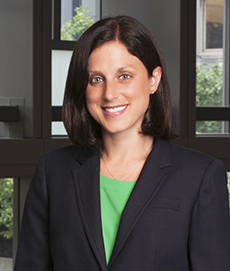Looking for Patterns in the Folded Genome
By Lida Tunesi

Jennifer Phillips-Cremins and colleagues recently collaborated on a new technique, published in Nature Methods, of searching for folding patterns in the human genome. A profile of Phillips-Cremins, published in the same journal, explores the path of interests that led her to this type of research.
Phillips-Cremins, an assistant professor in the department of Bioengineering, is interested in the “3D epigenome” of the central nervous system, or how the 3-dimensional folded shape of DNA controls development of neuronal cells. Her lab has previously studied folding errors in lab-made stem cells, as well as the role of certain proteins in gene expression during early development of neural stem cells.
Phillips-Cremins and her co-authors, including Danielle Bassett, Eduardo D. Glandt Faculty Fellow and Associate Professor in Bioengineering, have now developed a graph-theory based technique, called 3DNetMod, to identify regions of nesting and overlapping in a folded genome. The profile traces Phillips-Cremins’ career through studies in chemical and bioengineering to this work she does today at Penn.
3DNetMod draws on principles used to study connectedness in the brain or in social networks. A network of neurons, friends or TADs can include loosely and densely connected communities. The method maximizes so-called network modularity and parses the network to find structures within these communities. “My interest is in tackling really hard problems using many angles,” says Phillips-Cremins. As a child, she loved math. “I remember drawing a parabola on graph paper and the joy in the moment when the intuition between the equation and plot hit in the lightbulb moment.” In high school, she enjoyed algebra and calculus and is grateful to the teachers who encouraged her even though being good at math wasn’t cool among her peers. Then, when she was an undergraduate, math led her to chemical engineering with a math minor until she realized she wanted to work on biological problems.
Read more at Nature Methods.
